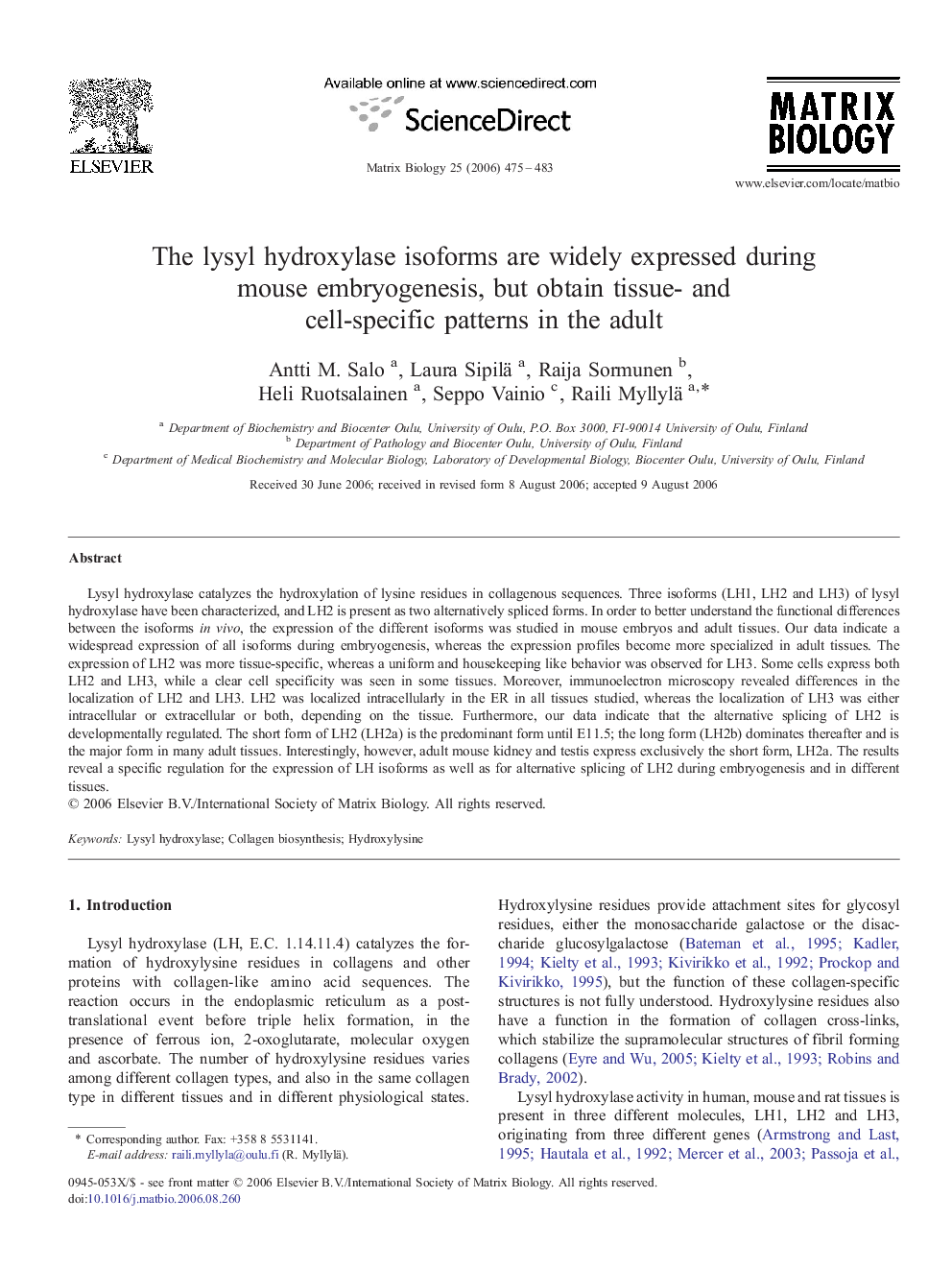| Article ID | Journal | Published Year | Pages | File Type |
|---|---|---|---|---|
| 2145470 | Matrix Biology | 2006 | 9 Pages |
Lysyl hydroxylase catalyzes the hydroxylation of lysine residues in collagenous sequences. Three isoforms (LH1, LH2 and LH3) of lysyl hydroxylase have been characterized, and LH2 is present as two alternatively spliced forms. In order to better understand the functional differences between the isoforms in vivo, the expression of the different isoforms was studied in mouse embryos and adult tissues. Our data indicate a widespread expression of all isoforms during embryogenesis, whereas the expression profiles become more specialized in adult tissues. The expression of LH2 was more tissue-specific, whereas a uniform and housekeeping like behavior was observed for LH3. Some cells express both LH2 and LH3, while a clear cell specificity was seen in some tissues. Moreover, immunoelectron microscopy revealed differences in the localization of LH2 and LH3. LH2 was localized intracellularly in the ER in all tissues studied, whereas the localization of LH3 was either intracellular or extracellular or both, depending on the tissue. Furthermore, our data indicate that the alternative splicing of LH2 is developmentally regulated. The short form of LH2 (LH2a) is the predominant form until E11.5; the long form (LH2b) dominates thereafter and is the major form in many adult tissues. Interestingly, however, adult mouse kidney and testis express exclusively the short form, LH2a. The results reveal a specific regulation for the expression of LH isoforms as well as for alternative splicing of LH2 during embryogenesis and in different tissues.
